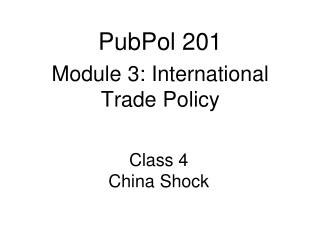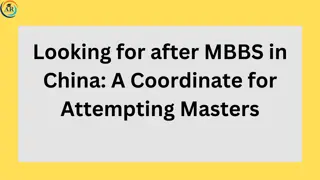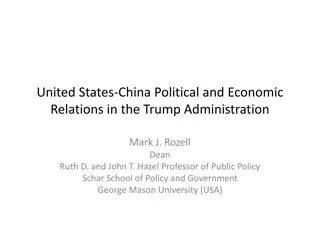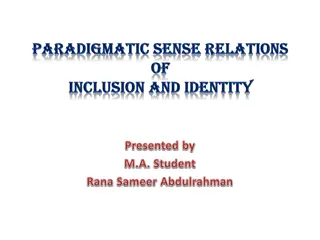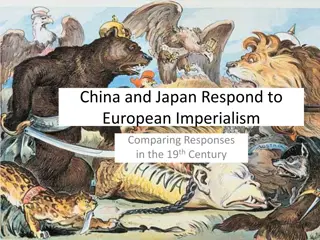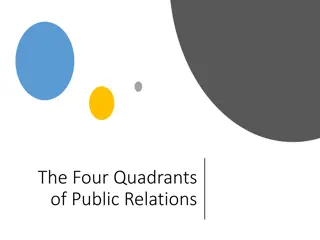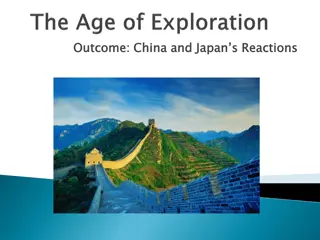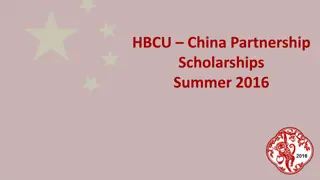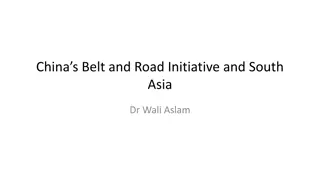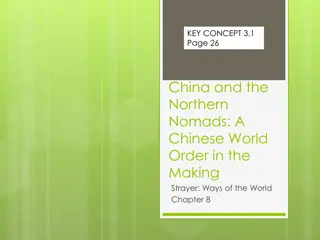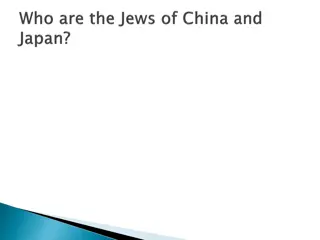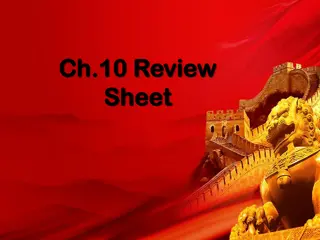EU-China Relations Workshop: Exploring Future Models for UK-EU Relations
This workshop held on July 12, 2017, delved into various models for UK-EU relations post-Brexit, including the EEA, customs union, Swiss, free trade agreement, and WTO models. Insightful discussions were shared regarding the implications and challenges associated with each option, shedding light on the complexities of establishing new trade relationships.
Download Presentation

Please find below an Image/Link to download the presentation.
The content on the website is provided AS IS for your information and personal use only. It may not be sold, licensed, or shared on other websites without obtaining consent from the author. Download presentation by click this link. If you encounter any issues during the download, it is possible that the publisher has removed the file from their server.
E N D
Presentation Transcript
EU-China Relations Workshop 12 July 2017, EUTW Der-Chin Horng Research Fellow, Institute of European and American Studies, Academia Sinica, Taiwan (R.O.C.) Professor (part-time) of EU Law and WTO Law at both National Taiwan University and National Chengchi University; Member of International Protection of Consumers Committee, International Law Association E-mail: dchorng@sinica.edu.tw 1
Outline I. Abstract II. EEA Model III. FTA Model IV. WTO Model V. Conclusion source Times Higher Education (2016) 2
I. Abstract There are several possible options for UK-EU relations in the future: (1) EEA model as per Norway; (2)customs union model; (3)Swiss model; (4)free trade agreement (FTA) model as per Canada; (5)WTO model as per Japan. 3
II. EEA Model (i) A. EEA Agreement The Agreement on the European Economic Area helped the EU to build the bilateral common markets with Norway, Iceland and Liechtenstein separately in 1994. Thus, EEA model can also be called the common market model . Norway, for example, is a member of the EEA and part of the Schengen Area. This model allows it to remain outside the EU but it has to accept the free movement of people. Under this model, the UK would enjoy most of the rights of a single market, financial services and soon. 4
II. EEA Model (ii) EEA members must make a financial contribution to the EU. They must also incorporate much EU law into their domestic legislation in return for access to the EU market. Moreover, EEA members accept free movement of persons. This model cannot solve the immigration problem of the UK, which was the main dispute of the referendum. the UK would not accept an off the shelf deal such as the Norwayor Swiss model. 5 source EU (2016)
II. EEA Model (iii) B. Swiss Model According to the bilateral agreement, Switzerland can limit The free movement of people by referendum and implement that after bilateral negotiation. Switzerland held a referendum about a quota limiting immigration in 2014; in response, the EU reduced its funding of Swiss educational programmes and research. The EU realizes Switzerland is a heavy burden for them to agreements to enhance bilateral trade cooperation, and therefore declared that it would not allow the UK to follow the Swiss model. Moreover, the UK has already refused to accept the Swiss model as well. conclude many sectoral 6
III. FTA Model Using the Canada-EU FTA as an example, the tariff duties of most goods trade could be removed under this model, but the tax duties of the services trade, including media and aviation industries, the most competitive sector of the UK, would not be removed. British exported goods would still have to comply with EU legislation and standards and this would beanotherdisadvantage for the UK. 7 source EU (2017)
IV. WTO Model (i) If no agreement is achieved after Brexit, this will be the WTO method the UK uses for maintaining trade relations with the EU. Under this model, Britain would not be able to enjoy the rights of free trade within the EU market and its goods will have 5.1% tariff duties levied on average to enter the EU; agricultural products will even be as high as 10.7% real effective tariff (2015). source WTO (2017) 8
IV. WTO Model (ii) It is notable that most WTO members have signed an FTA or other forms of Preferential Trade Arrangement (PTA) with the EU and enjoy different kinds of trade benefits. There are only 7 countries, including the US, Japan, Hong Kong and Taiwan, which maintain normal trade relations with the EU, but they actually become least favoured treatment (LFT) countries. This leads to those countries actively negotiating with the EU for the FTA. 9
IV. WTO Model (iii) Under the WTO model, the UK would not have to make financial contribution to the EU and would not need to accept the EU principle of Free movement of people. However, British citizens would also not keep their rights to live, work and travel freely in the EU. Generally, the WTO model is the choice of last resort, which can be called a Plan Z for the UK, since it might impose a de facto discrimination on Britain. 10
V. Conclusion (i) Alternative, the UK could join the US and the EU in TTIP negotiation and become one of the members. The advantage is it is easier to avoid the EU s opposition with the support of the US; on the other hand, the disadvantage would be the postponement of TTIP negotiation if the EU insisted on opposing it, to avoid the free rider by the UK. 11 Source BBC (2016)
V. Conclusion (ii) Source Financial Times (2016) The UK could develop negotiations with the EU about signing a special FTA, or a WTO-plus FTA, which could include free trade in goods, services, and investments while excluding the freedom of movement for persons. The caveat would be the guaranteeing of the rights of people who have been legal residents or employees for a certain period (2 years for example) in the territoryof both parties. This special FTA model might be the best way of continuing special bilateral relations, reducing disputes and uncertainties and creating a win-win situation for both the UK and the EU. 12


